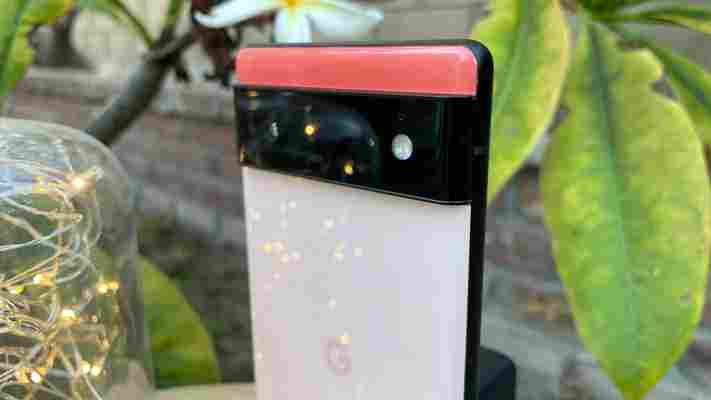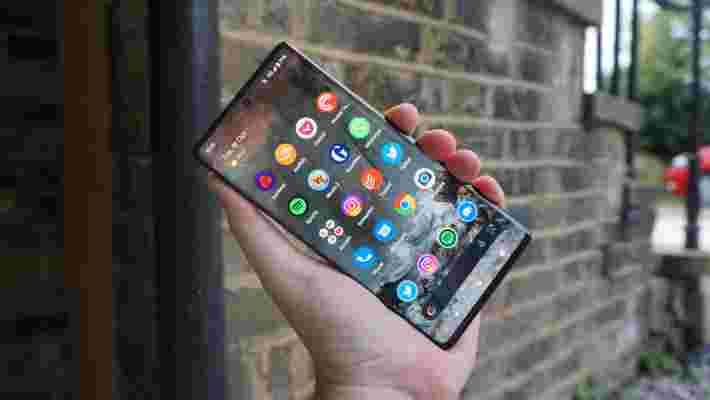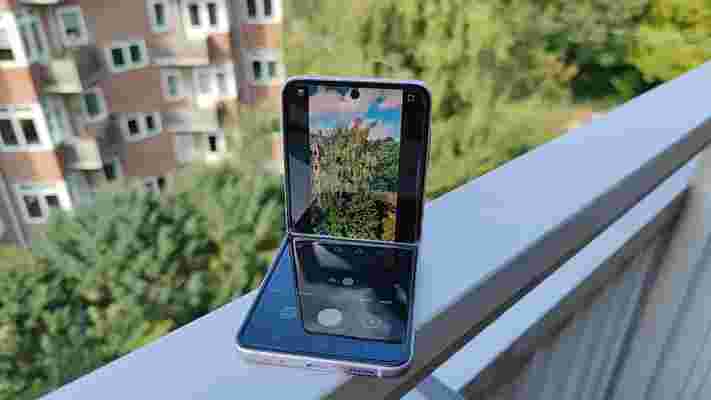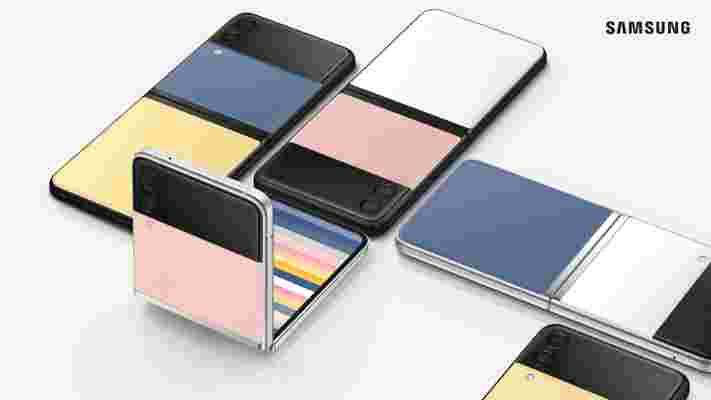It's the final day of short track speed skating at the Winter Olympics 2022 with medals in the women's 1500m and men's 5000m relay both on the line. The action gets going with the quarter-finals, starting off with record holders Choi and Minjeong Zhou Yang both in the same heat. Korea, ROC, China, Canada, Italy, Netherlands, Japan and Hungary face off in the men's relay. Here's how to watch every short track speed skating live stream from the 2022 Winter Olympics wherever you are.
Short track speed skating races are typically range from 500 meters to 5km in length. All of the short track speed skating events will take place at the Capital Indoor Stadium in Beijing. Located in the Beijing city center, it will also serve as the home for figure skating at the 2022 Winter Olympics. The track itself is 60m long and 30m wide, allowing competitors plenty of room to navigate the tight turns as they race to the finish line.
Since it was introduced to the Winter Olympics in 1992, four countries have gone on to dominate the sport—South Korea, China, Canada, and the United States. Overall, South Korea boasts the most medals in the event, with a total of 42 medals including 21 golds. Keep an eye on Choi Min-Jeong, who won the gold medal in the 1500m race in PyeongChang and currently holds the Olympic record for the 500m.
The Winter Olympics short track speed skating takes place February 5–16. Below you'll find all the information on how to watch a short track speed skating live stream from the Beijing 2022 Winter Olympics, wherever you are in the world.
Short track speed skating: dates and times
February 5
Women’s 500m - Heats: 11:00am GMT, 6:00am ET, 3:00am PT
Men’s 1000m - Heats: 11:38am GMT, 6:38am ET, 3:38am PT
Mixed Team Relay - Quarterfinals: 12:23pm GMT, 7:23am ET, 4:23am PT
Mixed Team Relay - Semifinals: 12:53pm GMT, 7:53am ET, 4:53am PT
Mixed Team Relay - Final B: 1:18pm GMT, 8:18am ET, 5:18am PT
Mixed Team Relay - Final A, Medals: 1:26pm GMT, 8:26am ET, 5:26am PT
Watch the short track speed skating live stream with a VPN
There are so many events going on at the Winter Olympics that not every country's TV and streaming coverage shows every discipline. If you can't get the short track speed skating where you are, then you can use a VPN to tune into a live stream from another country – something you might need to do if travelling abroad.
By downloading and installing a VPN , you can effectively trick your computer into thinking that it's back at home in the same country as the streaming service that you're trying to access. That way you can enjoy your home coverage without having to find an illegal stream - assuming you comply with the broadcaster's fine print, of course.
Use a VPN to watch the short track speed skating live stream from anywhere
How to use a VPN
Using a VPN is as easy as one-two-three...
1. Download and install a VPN - as we say, our top choice is ExpressVPN
2. Connect to the appropriate server location - open the VPN app, hit 'choose location', eg: select 'US' for Peacock, or 'UK' for BBC, 'Australia' for 7Plus or 'Canada' for CBC.
3. Go to the broadcaster's live stream - so that might be 7Plus , CBC , BBC iPlayer or Peacock TV .

Short track speed skating live stream: how to watch Beijing 2022 online in Canada

USA: short track speed skating live stream: watch every Beijing 2022 event on Peacock

Short track speed skating live stream: how to watch Beijing 2022 online in the UK
Short track speed skating live stream: how to watch Beijing 2022 online in Australia
Watch the short track speed skating: live stream Beijing 2022 in New Zealand
Beijing 2022 Winter Olympics schedule and events
Google Pixel 7: here's everything we know so far
While the Google Pixel 7 is still a long way away, it could end up being one of the most exciting phones of 2022, so we're already looking forward to what might come along.
And we're not the only ones either, because leaks and renders are already springing up to give us a glimpse into the future.
That’s what you’ll find in this article – a wish list containing the main features and upgrades that we want the Pixel 7 (and Pixel 7 Pro) to offer, in order to make them the best phones possible.
But that’s not all, before that you’ll find everything that we’ve heard about the Google Pixel 7 range so far, including information on its release date, price and specs.
We’ll also be adding to this article whenever we hear anything new - but expect the Google Pixel 6a and maybe even a Google Pixel Fold before this – so keep this page bookmarked.
Google Pixel 7: cut to the chase
Google Pixel 7 release date and price
The Google Pixel 7 will probably be announced sometime in October 2022. There aren’t any rumors saying that, but every previous model was unveiled in October of their release year, except the Google Pixel 5 , which was announced on September 30 – so virtually October.
That said, one source claims that panel shipments are starting a month early , which could also mean the phones will land early - perhaps in September.
Whenever the Pixel 7 range is announced, it’s likely to go on sale a week or two later based on past form – but also probably before the end of October 2022.
As for the price, it might well fall roughly in line with the Pixel 6 range. The standard model of that starts at $599 / £599 / AU$999, while the Pixel 6 Pro starts at $899 / £849 / AU$1,299.
News and leaks
We’ve already heard a few things about the Google Pixel 7, in fact, we've even seen unofficial renders showing both it and the Pixel 7 Pro.
You can see some of these below, but the phones look remarkably similar to the Pixel 6 range here, with the main difference being that the camera block merges into the side of the phone here.
These renders also come with some details, including that the Pixel 7 is apparently 155.6 x 73.1 x 8.7mm, (rising to 11.44mm at the camera bump), while the Pixel 7 Pro is 163 x 76.6 x 8.7mm (or 11.2mm at the camera bump).
Their screen sizes could be similar to the Pixel 6 range, with the Pixel 7 said to have a 6.2-6.4-inch display, while the Pixel 7 Pro might have a 6.7 or 6.8-inch one. Cameras meanwhile could include a main, ultra-wide and telephoto on the Pixel 7 Pro, while the standard Pixel 7 might get a 50MP main, a 50MP ultra-wide, and an 8MP front-facing camera, along with a battery of around 5,000mAh.
Finally, there could be a choice of 128GB, 256GB or 512GB of storage in the standard Pixel 7, and color choices of black, coral, blue or white.
Elsewhere we've seen other leaked Pixel 7 Pro renders , which look similar albeit in very different colors, as you can see below.
Since they launched, we've also seen leaked promotional pictures for Pixel 7 Pro cases which point to the design staying the same.
Another source meanwhile suggests the screen sizes could be 6.3 inches and 6.7 inches for the Pixel 7 and Pixel 7 Pro respectively. The former would therefore be slightly smaller than the 6.4-inch Pixel 6.
We've also heard that the Pixel 7 range might unsurprisingly be powered by the second generation of the Google Tensor chipset, which we’ll call the Tensor 2 for convenience.
Evidence of that has been found in Android code , as has mention of ‘Cloudripper’, which is believed to be a baseboard or developer board that the Pixel 7 might use.
More rumors have pointed to these Tensor 2-powered phones getting the codenames Cheetah (for the Pixel 7) and Panther (for the Pixel 7 Pro).
Google also patented an under-display camera technology in August 2021, and some have speculated that it may mean its ready for the Pixel 7. That does mean it's likely this could be one of the next-gen phones to feature an "invisible" selfie camera.
Patents don't always get used though, so it may be that this technology is just an experiement within Google HQ. We won't know for sure until we see an under-display camera appear on a Pixel phone.

Before the Pixel 6 range even launched there was also evidence of the Pixel 7 found by XDA Developers in the Google Camera app. The upcoming phone appears to have the codename ‘pipit’, and there’s only one model mentioned, which could mean there won’t be a Pixel 7 Pro. Since then though this codename has been linked to the rumored Pixel Fold , so it might be talking about that instead.
The code in the app suggests that the Pixel 7 (or possibly the Pixel Fold) will have most of the same camera features as the Pixel 6, and that it will have an ultra-wide lens, but there’s no mention of a telephoto one. That said, the source notes that it’s too early to be sure this version of the Google Camera app actually lists Pixel 7 features, let alone that the list is complete.
What we want to see
The Pixel 6 and Pixel 6 Pro are the most exciting Google phones in years, but they’re far from perfect, so we want to see the following changes for the Pixel 7 range.
1. Better battery life
In our reviews we listed the battery life as a negative point of both the Pixel 6 and the Pixel 6 Pro. It’s not terrible, but it’s distinctly average, so it could be a lot better.
For the Pixel 7 range then we want better battery life. Google is using a custom chipset that’s supposedly been designed from the ground up for these phones, and it makes the software that they run too, so we’d think it would be well positioned to make the Pixel range power efficient.
And if it can’t manage that, then just stick a bigger battery in. Either way, we don’t want to be worrying that we might not get to the end of the day without charging.
2. More power

The Google Tensor chipset at the heart of the Pixel 6 is one of the most exciting aspects of the phone, as this is the first time Google has used a custom chipset rather than an off-the-shelf Qualcomm one.
Yet, while Google talked a big game about Tensor, its performance in benchmarks isn’t a match for the best rivals, like the Snapdragon 888 powering the OnePlus 9 and Samsung Galaxy S21 .
Benchmarks aren’t everything of course, but we’d still like the Google Tensor 2 to exhibit more raw power, so it can directly compete with the best rival silicon.
3. Longer support
Prior to the launch of the Pixel 6 range it was rumored that Google would offer five years of Android updates for these phones, but in practice it only promised five years of security patches, along with three years of Android updates.
While that’s at least as good as Android rivals, it’s no match for iPhones, which sometimes get even more than five years of operating system updates.
Some other companies can point to the chipsets in their phones as holding them back, as the chipset maker also ideally needs to support updates for an extended period, but with Google making its own chipset now, it doesn’t have that excuse. In fact, it doesn’t have any excuse, so we’ll be very disappointed if the Pixel 7 isn’t supported for longer.
4. A better fingerprint scanner

The Pixel 6 range are the first Google phones to have an under-display fingerprint scanner, but we noted in our Pixel 6 Pro review that the implementation is far from perfect.
We found that it would sometimes take several attempts to unlock, presumably because it’s pickier than some phones about exactly where you place your finger. So for the Pixel 7 we want this smoothed out, so that the fingerprint scanner reliably and rapidly works.
5. A longer, variable zoom
The Google Pixel 6 doesn’t have a telephoto camera at all, and while the Pixel 6 Pro does, it only zooms to 4x.
For the Pixel 7 (or at least the Pixel 7 Pro), we want to see the zoom extended to 10x, like on the Samsung Galaxy S21 Ultra . But we don’t want just 10x zoom – we want it also to optically zoom to 2x or 3x, or ideally to even be able to optically zoom at every level up to 10x, so you have ultimate zooming flexibility.
Samsung Galaxy Z Flip 4: what we want to see
While the Samsung Galaxy Z Flip 4 launch is still likely half a year away, we've got high hopes for the Galaxy Z Flip 3 's successor to be one of the best foldable phones we've tested.
Why do we say that? Well, because it has to be: the foldable market is getting increasingly busy, with the Huawei P50 Pocket showing how feature-packed clamshells folds can be, and the Motorola Razr 2022 promising top specs too. For the Galaxy Z Flip 4 to be competitive, it'll need to be a fantastic device.
Each new version of this bending Samsung phone comes on leaps and bounds from the last - the original Galaxy Z Flip didn't even have 5G, and the last version came with a big outer screen and a competitive price.
So we're hoping the Samsung Galaxy Z Flip 4 comes with even more improvements over its predecessor - in fact, we've written up a list of what we want to see below. On top of that, we've detailed what we know about the device so far, including leaks and speculation.
Cut to the chase
Samsung Galaxy Z Flip 4 release date and price

We don't have any solid leads on a release date or price for the Galaxy Z Flip 4, so we have to judge based on the Z Flip 3's appearance.
That phone cost $999 / £949 / AU$1,499 and launched in early August 2021, with a release later in the month. For all we know, the Z Flip 4 could launch at a similar time.
Saying that, the Z Flip 5G cost $1,380 / £1,300 / AU$1,800, so the Flip 3 had a big price reduction. We could see that trend continue so that the Z Flip 4 is even more affordable.
News and leaks
One Samsung Galaxy Z Flip 4 leak points to the phone having a 6.7-inch main screen and a 1.9-inch cover display, much like its predecessor.
Another leak we've heard suggested the Galaxy Z Flip 4 is being tested with an under-display camera, though that's just a prototype so far, so it could end up still using a punch-hole cut-out for the front-facing selfie camera.
The leak continued that the device will have a redesigned lighter hinge but the same screen dimensions as the Z Flip 3, much like the leak above states.
Since then though another leak claimed the Galaxy Z Flip 4 won't have an under-display camera, but that it will have a slightly bigger cover screen, a third camera on the rear, and a roughly 10-20% larger battery. A more recent rumor says the battery capacity will be 3,400mAh rather than the 3,300mAh of the Galaxy Z Flip 3.
We've also seen a Galaxy Z Flip 4 patent which showed a rotating camera situated in the hinge - it's a novel concept, but likely one Samsung won't implement given how 'out-there' it is.
What we want to see

1. A more affordable price
The Samsung Galaxy Z Flip 3 made great strides over its predecessor by being relatively affordable compared to the high-cost original... but it was still a pretty expensive smartphone.
We'd like to see the price-lowering trend continue for the next-gen device, to perhaps get the device in line with the premium S22 series or even to a mid-range price.
The price is unlikely to get low enough to make the Galaxy Z Flip 4 a tempting alternative to non-folding phones, but we live in hope.
2. Improved battery life
One thing we noticed in our Samsung Galaxy Z Flip 3 review, is that the battery life wasn't stellar. We were lucky to get the thing to last a day, and it seems the handset was designed so that you wouldn't need to flip it open that much, and thereby draw lots of power from the main screen.
Well, some of us like using our super-pricey smartphones, and therefore need a battery life that actually ticks through a whole day.
So we'd like to see the Samsung Galaxy Z Flip 4 have improved staying power, so we can actually use it without worrying that it'll run out of juice.

3. Samsung Galaxy Bespoke from the get-go
The Galaxy Z Flip 3 was available in a few colors, but months after launch, Samsung unveiled Galaxy Bespoke , which is a way to design the phone in a few different color combinations.
This lets you make a phone that's a little more personal than the standard ones Samsung offers.
It would be great for early adopters of the Z Flip 4 if they could pick up custom colored models from the get-go, so they don't get burnt if the way-more-interesting options only go on sale later.